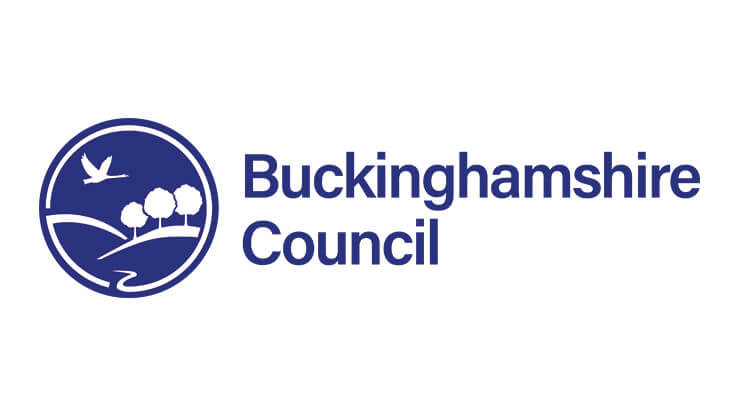Remembering Vivian Gussin Paley: 1929–2019
In Memory of Vivian Gussin Paley
GILLIAN DOWLEY McNAMEE
Erikson Institute, Chicago
First published 2019 University of Chicago Press
We cannot know, when children are at a young age, who the next great one will be, so we must teach as if every child is that next great leader. If we do so, that person will help us all, as will every other child in the classroom.
Vivian Gussin Paley’s parents were Jewish immigrants from “the old country” of western Russia. First her father’s family settled in Detroit, and then her father went on to Chicago to complete his medical studies at the University of Chicago. Vivian grew up in the Chicago of the 1930s, and as she says, she went to ordinary Chicago public schools with ordinary teachers, at Lowell Elementary School followed by Roosevelt High School. They lived in Humboldt Park with other Russian immigrant families. Dr. Gussin’s patients could call their home any time of the day or night, and he talked with each one and saw every patient in need as soon as he could in his home or theirs. As a young teenage girl, Vivian worked in his 55 East Washington Street office as the receptionist and bookkeeper when she wasn’t in school. Patients often paid with eggs or a freshly killed chicken.
Dr. Gussin showed the same attentiveness to his daughter when she needed it as he did with patients. Vivian once recounted how early on in her schooling a teacher questioned her using her left hand to hold a pencil to write and instead tried to get her to use her right hand, as most teachers did in those days. Vivian came home upset about her inability to hold a pencil using her right hand and the resulting poor penmanship. Upon hearing this, Dr. Gussin went to school with Vivian the next day to talk with the teacher. He told the teacher that he was a doctor, that it was not good to make Vivian change, and he asked her to stop requiring her to do so. The teacher stopped, and Vivian carried with her the memory of her immigrant father standing up for the needs of his child. She would grow up to become a professional educator devoted to standing up for the needs of our youngest children in schools.
One night as I ate dinner with Vivian, she described a scene with her high school math teacher, Mr. Hendershot, that made her laugh. She was in her sophomore year. When a boy gave a wrong answer to a math problem (which was frequently), Mr. Hendershot threw an eraser at the boy and shouted, “You are a ten o’clock scholar in a two o’clock town!!” He never did this to the girls, but his disgust with ignorance was palpable. Vivian said no one really knew what he meant, but she figured it meant the kid was a slow dull thinker among a bunch of kids who weren’t going anywhere fast. This Roosevelt High School teacher could not see much of a future for his students. Vivian would go on to become not only a most accomplished educator, but also one who believed the exact opposite about the students in her class or any class of children. There was no such thing as a dull child of any age in her view, only children with a story waiting to unfold in pretend play that would yield talents that would lead to valuable contributions in the classroom and, in later years, to society.
Vivian described herself once to me rather sheepishly as excelling at whatever she did always, and with no instruction. She was an athlete in as much as that was possible for a young woman in her generation. She played tennis, and did horseback riding, by taking the Kedzie bus north from Roosevelt High School to a farm on Wednesday afternoons. She was allowed to wear jodhpurs to school on Wednesdays. She thought they were very exciting. As a freshman at the University of Chicago, she was recruited immediately for the tennis team. She had a fabulous forehand and backhand and could play the whole court. But she had a terrible serve. The coach asked her how she had developed a serve that was off by more than a little bit. Who had instructed her in this? She said, “No one.” The coach was surprised and said, “Well, you will need to get a tutor. When people have such trouble, their parents hire a tutor to help them learn.” She talked to her mother about this, but the concept of tutoring was foreign to her and her mother. Tennis was a game that she played, not something that required tutoring. She had learned everything so far by being a quick study with a logical, careful mind. She did not join the tennis team.
When I met her, Vivian was a polished master teacher having been working with young children for about 15 years. She had just completed the manuscript for White Teacher and was looking for a publisher. As we now know, she would publish that book plus 12 more, along with essays in the Harvard Educational Review and book reviews for the New York Times, documenting her insights about teaching young children and what makes their learning possible in school. Each of her books describes the children who contributed to changing her worldview in the classroom: Alma, Wally, Franklin, Jason, Molly, Rose, Sylvia, Marianne, Reeny, and Stanley. Vivian spent decades traveling the country and internationally giving keynote speeches at conferences and schools in prestigious urban areas as well as ones in the smallest of rural areas. Following major speeches, she offered teachers an extra day for working with them in their classrooms at no cost to the school. She provided daylong demonstrations of storytelling and story acting with children at different grade levels, followed by discussion with teachers about what unfolded in their classrooms.
She described one such experience in a classroom where she was demonstrating storytelling and story acting with a group of second-graders. She invited individual children sitting in a circle to dictate a story that she wrote down that was then acted out immediately. A group of teachers stood in the back of the classroom to watch Vivian at work. One boy, a child whom she recognized as one that teachers would call a troublemaker, told a story where a good guy killed a bad guy in a very dramatic manner. She could hear the intake of breath as the teachers wondered what Vivian would do with such a scene they would not have allowed. Vivian took down the story exactly as the boy dictated and then said to the boy, “When you act out being the bad guy [the character he wanted to play], do you want to die as we count to five, or count to seven?” The boy said gleefully, “Seven.” Vivian directed the scene and when it came time for the bad guy to die, she invited the class to count with her. The boy enacted each gesture of dying, falling to the floor, inside the count of seven. He then happily got up and sat down while the children clapped, having appreciated the story. She then went on to invite the next story.
The teachers asked her about this story later. Vivian explained exactly what she had in mind. Great writers offer their readers all kinds of moments of human pain and suffering. She said, “This young writer, and all the other children too, wanted the chance to think about this moment and was asking for the chance to see how this story would look. Why not give him and the whole group the chance to find out?” She reminded the teachers that the rules of theater are disciplined and strict: no touching, no leaving the stage, everything is pretend. She gave him the choice regarding the amount of time to act out dying to remind everyone that they are acting and that there is structure and discipline reining in our imaginations in storytelling and story acting as well as pretend play. The bottom line is no one is ever allowed to hurt someone with words or actions, as in all aspects of classroom life. Once that safety is established, everything is possible to think about.
I was as green as they come when I first began working with Vivian; I had no idea how to start a conversation with young children in school or orchestrate good pretend play, although I grew up playing with three brothers and a sister. In school, I had no idea where I belonged or what “teaching” meant. When I first met Vivian, I knew I had found the person who held the secrets of what I longed to know how to do. Surprisingly, she said that she did not know how she learned how to do what she was doing; she just figured it out. She made the difficult art of teaching look easy. I became her student teacher and started from the beginning to work at every single detail of learning what it means to be a teacher. It has served me well in my life’s work as a teacher educator. I know in my gut that everything about teaching can be learned if we observe, practice, ask questions, and try again the next day.
Teaching is a most forgiving profession, Vivian would say. When teachers make mistakes, or miss a connection or an insight, they can gather children the next day and say, “You know, James said an interesting thing yesterday about Batman having a dad in his story we acted out. It reminds me of what I saw you playing just now with the children in the block corner— that Batman has brothers and sisters too.” She would be entering her favorite part of teaching: connecting as many experiences as possible among the children in every moment of the school day to create a larger story about what they might see in it, and building a caring family while doing so.
I began writing letters to Vivian soon after I finished student teaching with her, even though we lived a few blocks apart, because there was so much that I did not understand about children who were playing, arguing, not paying any attention to me, and even confronting me in what I thought was outrageous disrespect. Usually the child was revealing a huge gap in my understanding of my job as teacher. I wrote letters to Vivian weekly, and then daily for decades. I also visited her home most Friday afternoons at 3 p.m. after work for both of us. We would start with a cup of tea and then turn to a glass of wine or sherry with Irving, her husband of 71 years, when he arrived home. Irving would come in humming what he said was the greatest piece of music ever written, and he just had to play that record for us to hear. Vivian would either ask him to hold off or turn the music down so we could finish our conversation. Irving grudgingly did so. How could we not want to hear the greatest violinist (the Russian, David Oistrakh)? I used to try to write down the name of each symphony or concerto or quartet that Irving was playing so I would know the few choice pieces of classical music worth listening to. It took me some time to realize that every single piece of classical music Irving ever heard was the greatest piece ever written! I did not have to write anything down but just needed to listen because whatever it was, it was the greatest ever. Irving knew every note written by composers and played by conductors, soloists, and symphonies that filled their living room and the concert halls they visited in their travels around the world.
On those Friday afternoons, Vivian would shoo me out the door by 5 p.m., as she had to get Shabbos dinner on the table. Sometimes I would stay for the lighting of the Shabbos candles and the saying of the prayers with them, “Barukh atah Adonai, Eloheinu Melekh ha’olam, asher kid’shanu b’mitzvotav, v’tzivanu l’hadlik ner shel Shabbat.” Those Friday afternoons were a symphony of ideas about teaching young children, the greatest classical music ever written, and their Jewish traditions and family history stretching back to the old country.
Vivian was a writer and teacher—they went hand in hand. She also loved writing letters. She was best friends with Joyce, her postal woman in Hyde Park, followed by Chris, who is still the mailman in our neighborhood, who counted on delivering letters to her daily. Dan was the postman for their Wisconsin summer home where Vivian did much of her writing, followed by Nettie. Vivian wrote to me about Dan late one summer.
September 16, 2011
Dear Gil,
As I put a goodbye note to Dan the Postman in the mailbox on the road, I realize that my relationship with him is far more personal than he knows. I always feel he cares so much if I write letters and that he cares so much that I receive letters. Clearly, I have talked myself into this connection, but it shows me how important the teacher’s response is to a student, from nursery school to old age. I remember a kindergarten girl once asking me, “Are you happy that I’m Cinderella?” I answered, “Yes, I do feel happy but why do you ask?” She said, “Because I feel happy that I’m Cinderella.”
In another letter, Vivian recognized how her focus on seeing life through experiences in her kindergarten classroom could seem a bit much for people. She wrote,
April 21, 2018
Dear Gil,
Sometimes my own boys said to me when I drew upon connections between my kindergarten events and our household goings-on, “Mom everything cannot be compared to your kindergarten!”
I wanted to say that, yes, everything does find a similar story in the kindergarten, but I didn’t. Sometimes they did not want to be reminded of those easy simple playful days when it was OK to pretend and it was OK not to know everything but to make up things that made sense if you were a superhero or a princess.
When do our little children have their pretend times taken seriously? When do we say in a sense, “Go on! Go and pretend something. That’s what you can do now. Later on, when you are older, we’ll see if your pretend is in a book.”
“Can we pretend we are bad?”
“Yes, even that. But you can’t hurt someone or make people feel bad.”
Storytelling and story acting are such a safe, easy way to pretend being bad, without unwanted consequences. Why is it hard for teachers to be comfortable with “pretend bad?”
Love, Vivian
Vivian, like Mr. Rogers, was happy knowing each of us just the way we are. It is simple to say but, as she discovered over a lifetime, very hard to live daily life without seeing people through a cloud of judgment. To be in Vivian’s presence was an incredible experience, a gift to be seen and listened to for exactly who you are in all the dignity and interesting ideas she knew might be disclosed any moment. Every child who was in her kindergarten, every parent of a child in her classroom, every student teacher, and every reader of her books experiences this gift. Vivian could listen with every sensibility she had. She wanted to know, “What story do you have to tell?” She loved listening to children’s pretend play and stories because each contained a most unexpected and interesting point of view that she would connect with, saying, “That reminds me of . . .”
Vivian even saw possibilities for learning about early childhood classrooms on the Cubs baseball field. Vivian and her family are loyal Cubs fans. Vivian wrote me a letter about a game played on Tuesday night, October 10, 2017, a night when she knew I was teaching. The letter is about outfielder, Kyle Schwarber. After watching the game on TV, she wrote:
Dear Gil,
My story is about Kyle Schwarber who nearly lost Game 3 of the Cubs versus the Nationals play-off game all by himself.
The score was 1 to 1 in the middle of the 8th inning when a fly ball was hit almost directly to Schwarber. He made two errors trying to catch the ball. The game was effectively lost. Schwarber looked shocked! As he walked into the dugout, Joe Madden [the team manager], reached out and hugged him. Then each Cub player did the same. They only wanted to console and comfort their teammate. By the time Schwarber reached his seat, he was smiling again, his confidence returned.
This amazing event, this picture of spontaneous group empathy for the one who was hurting—even though he had lost their game for them—was seen by thousands of people. You could almost hear the intake of breath in the stadium.
Now actually after the game was won by the Cubs in the 9th inning, the victory hugs were given again to Schwarber. “You see!” the hugs seemed to say. “It was okay! We loved you even when you got the two errors. Winning the game is great but our friendship goes deeper. We believed in you before, when you failed.”
Everyone I talked to saw what I saw. Everyone understood that a sort of miracle had taken place. I have seen examples of this group empathy in a classroom of 3, 4 and 5-year-olds. It starts to be covered up when children are around 8 years old when academic competition really takes hold of our intuitive morality. Not only academic competition but matters of looks, speed, and popularity begin to overwhelm niceness and kindness.
Love, Vivian
From nationally televised sports TV, this great American educator saw the essence of the schooling we seek for children when they become their best selves. She cared deeply about the well-being of every single child and his or her potential before anything else. She brought pure empathy to each teaching moment—allowing herself to feel what each child was feeling, and to stay present with him or her through every moment of their pretend play and experience of success and failure.
Vivian’s writings attest to children learning what empathy looks like and feels like in pretend play first. Vivian understood that this is where the seeds of growing whole and successful come from: in a winning baseball team, and classrooms and schools where children achieve their intellectual and personal potential beyond our wildest dreams. This is what Vivian was studying daily in her classroom and bringing home to dinner conversations eagerly. She was holding out for us what took her some time to learn, and what she wanted to give each person she met: the experience of believing in each of us long before we could feel it ourselves.
Jewish legend holds that in every generation there are 36 wise men or women who grace the earth with their kindness, compassion, strength, wisdom, and willingness to help ordinary people find comfort when tears flow and find a way to keep going through the worst of life’s hardships. They are the Lamed Vovniks, ordinary people whose good work in the face of evil, pain, and suffering in the world helps right the balance with their gestures of kindness. “Who are the Lamed Vovniks? We may not know. They may not even know themselves. But wherever they are, we can be assured of this: They lead. They comfort. They teach. They protect. They are filled with compassion. They are the very best among us” (https://www.lamed-vav.com/the-legend).
Vivian Gussin Paley could surely have been a Lamed Vovnik. She had a way of seeing with a sparkle in her eyes and listening carefully to the story someone was telling. With a little child, or a friend, or a colleague taking a risk, she listened, and she cared in a way that the person will never forget. The sparkle soon came into our own eyes. We all felt stronger, taller, and wiser in her presence. It is hard to imagine tomorrow when the sun will rise and we cannot stop by to see Vivian, call her on the phone, and, most of all, send her a letter with just one more question. Yet she would say to us as she told me 45 years ago: in every classroom of children, there is a great mathematician, a writer, a great scientist, economist, lawyer, government leader, or doctor. Teachers in every classroom, whether the students are 3 years old, 13, or 43, must assume that the next great mind is right in front of us. Opportunities for talent to break through and offer us lifelines to the future are all around us. We cannot know, when children are at a young age, who the next great one will be, so we must teach as if every child is that next great leader. If we do so, that person will help us all, as will every other child in the classroom. It is not our work as teachers to judge any child’s contribution but to nurture it. Vivian will always be listening for our next story from the classroom and finding the seed of nobility in each of us in this greatest profession she could imagine, being a teacher who was a writer.











